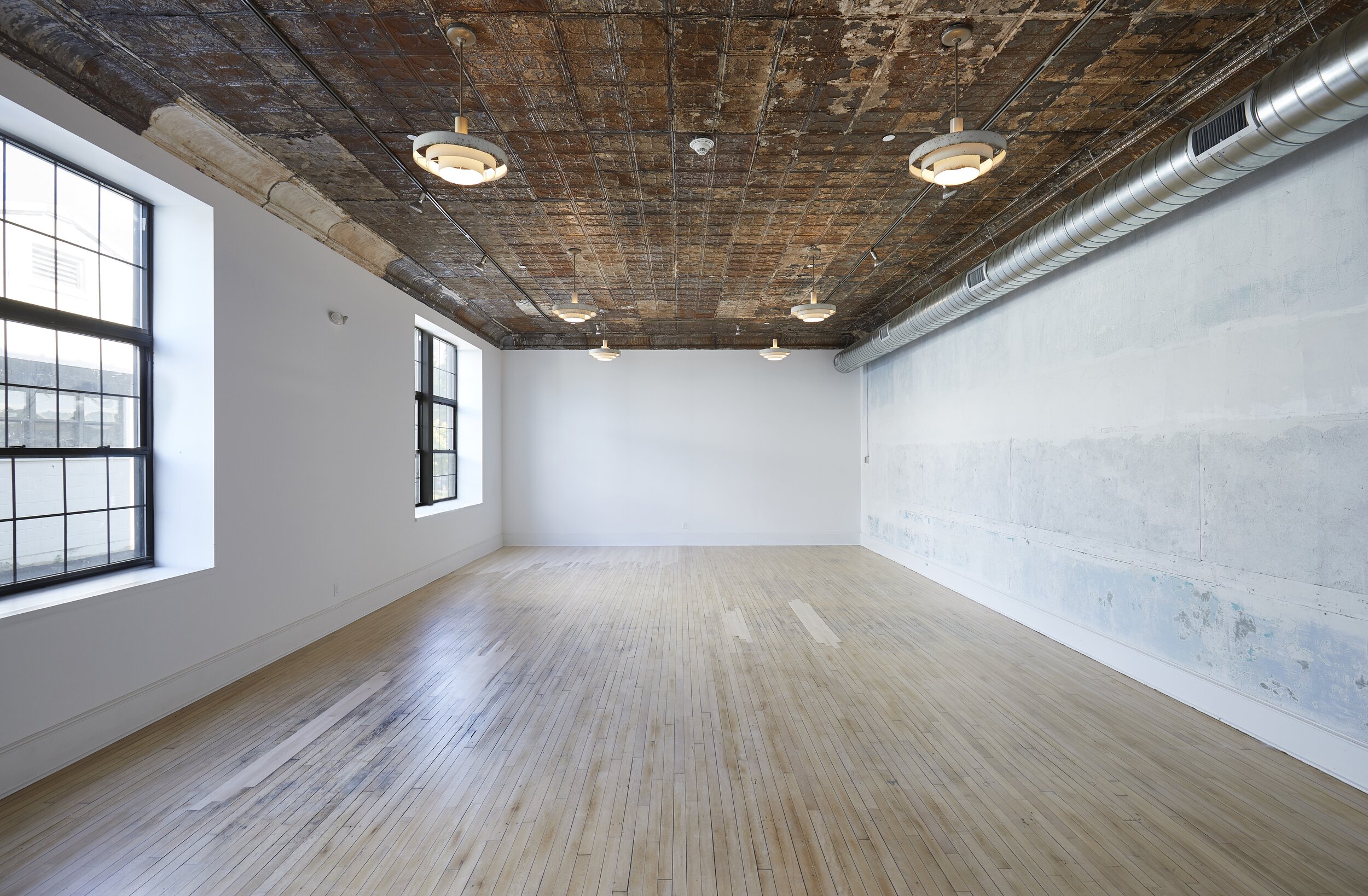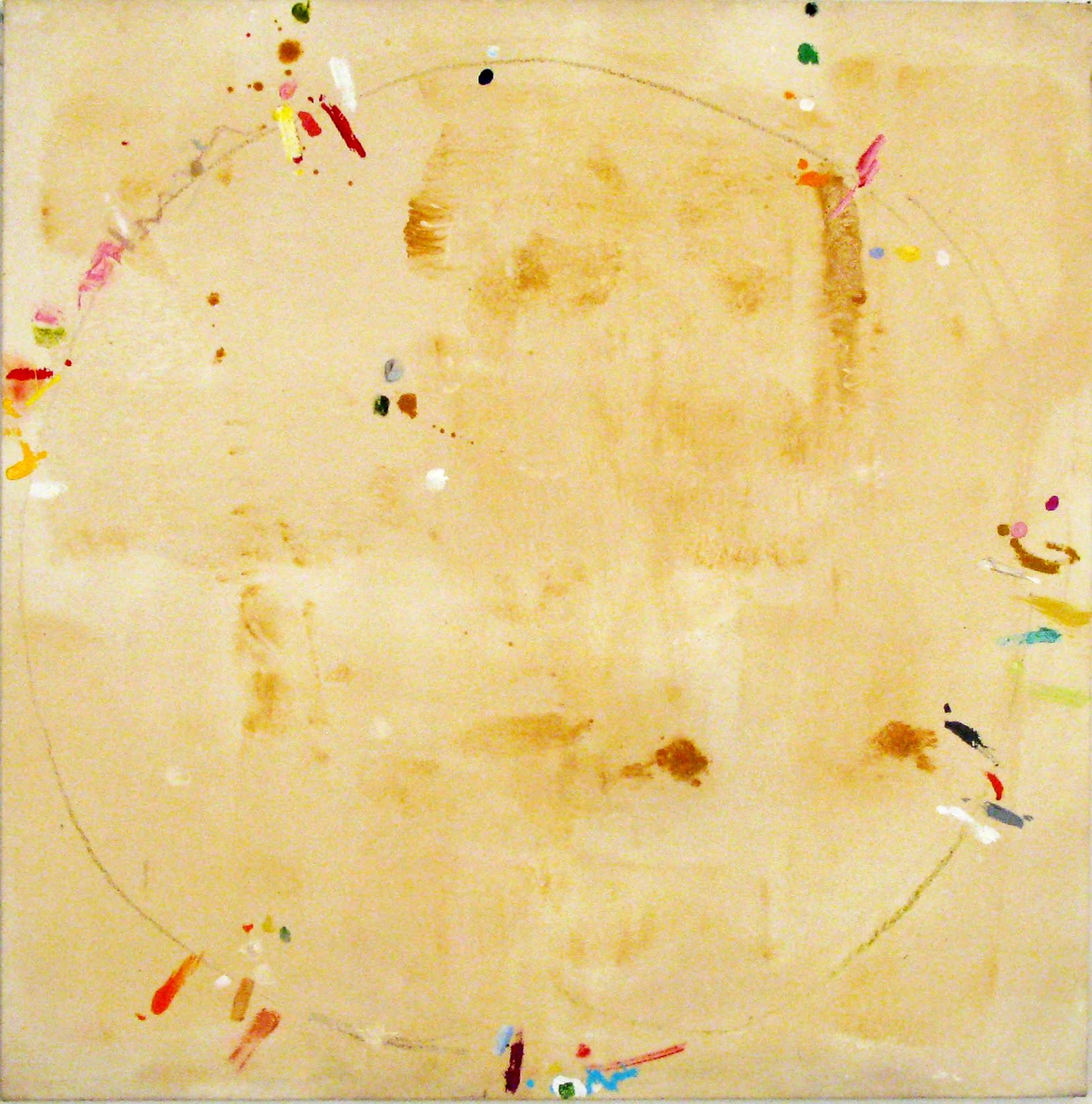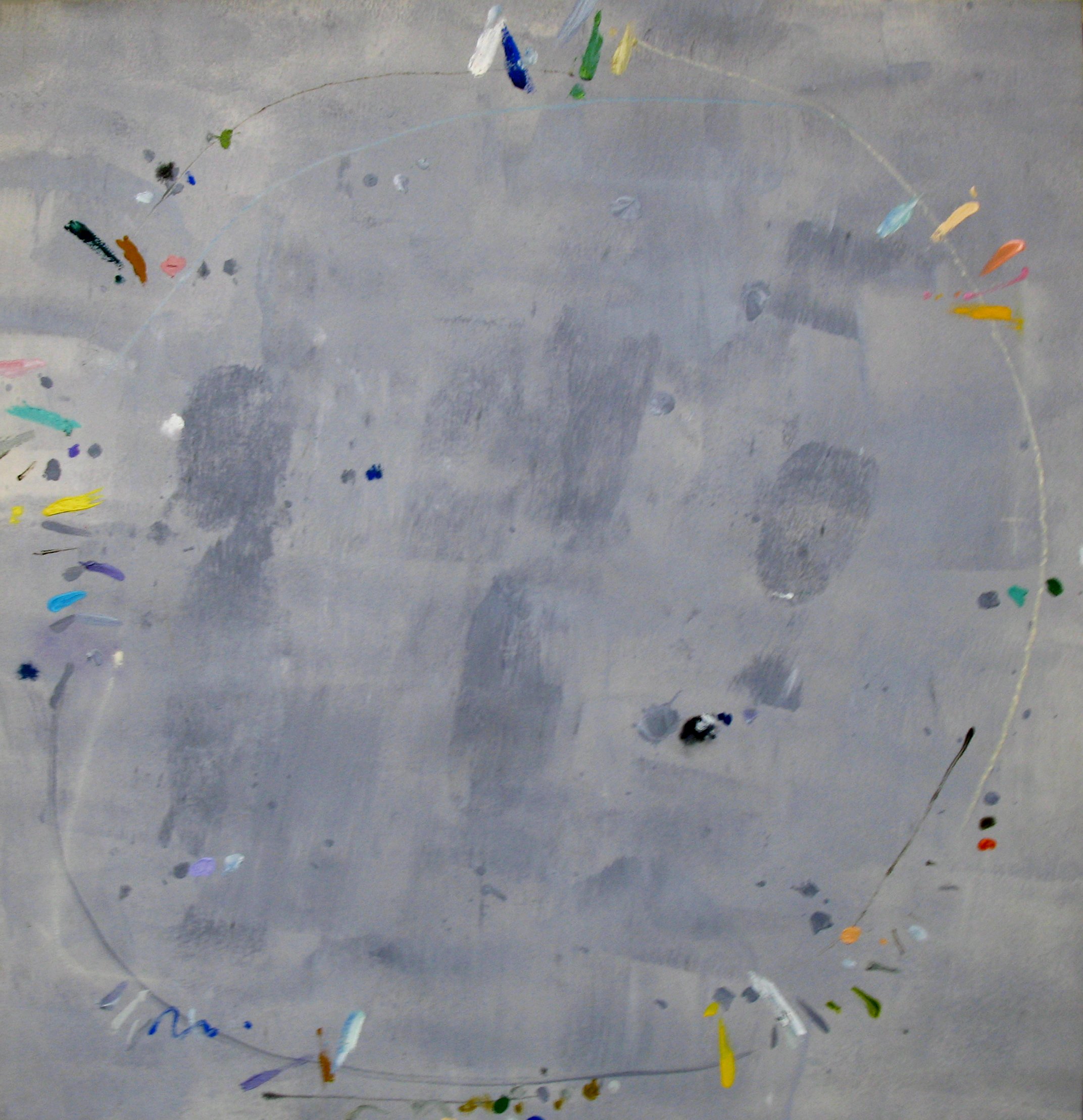
The paintings on display primarily focus on a period of 12 years in which Kikuo Saito returns again and again to the implied shape of an ellipse as a site to explore notational mark-making and dynamic color relationships. Four canvases share a similar composition in which small gestural brushstrokes follow the circumference of a large circle placed atop a monochrome color field. Two early tondos by Saito which have never before been exhibited inverse this composition, with squares revealing raw canvas placed within a round composition.
Modern artists of the previous generations similarly turned to a bold central ring dominating the picture plane, notably Jasper Johns, Robert Delaunay, and Kenneth Noland (an artist Saito worked with closely as a studio assistant). The focus on a centralized perfect circle has an even longer tradition within the practice of Zen Buddhism’s Ensō – a style of Japanese sumi-e ink calligraphy which thought of drawing as a spiritual practice. While Saito was not a practitioner of Zen Buddhism, he pays homage to this tradition with the title of his 1987 painting Monk’s Circle.
The titular work Summer Song illustrates how Saito would further utilize expressive mark- making to great effect in his later years. The architecture of the composition is no longer the organic universal form of the circle but relies on inventions more modern and man-made, namely the grid and characters from the Latin alphabet stenciled in Times New Roman (a font invented with mechanical reproduction in mind). The letters are placed on a roseate color field interspersed with Saito’s signature brushwork. All these elements together are emblematic of the complex compositions Saito would continue to pursue throughout his career.
– Michael Barraco





